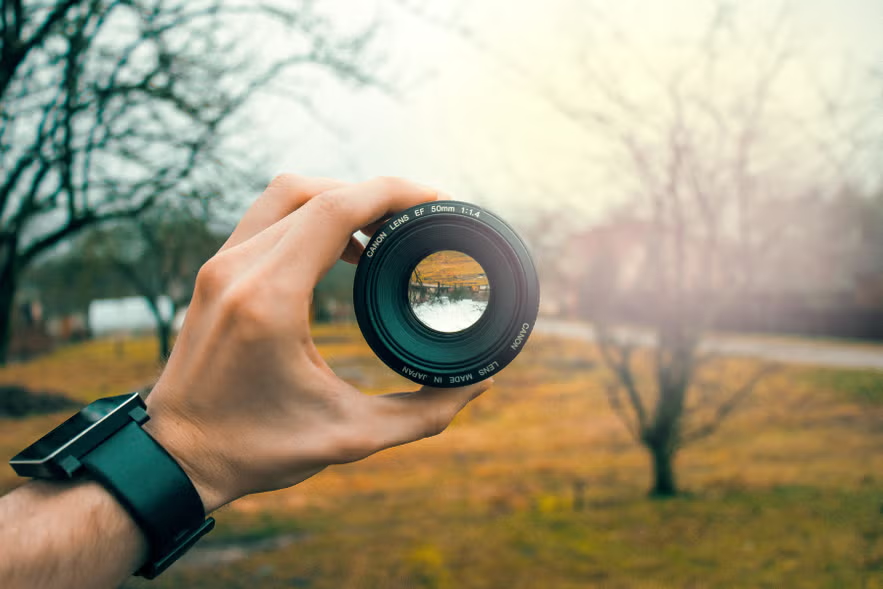Portrait photography is an art that combines technical skills, creativity, and an understanding of human expression. Whether you’re a beginner or an experienced photographer, improving your portrait photography skills is all about understanding key techniques, settings, and tips. In this article, we’ll explore the best photography techniques to help you take better portraits and capture stunning, emotional images.
1. Master the Rule of Thirds
The Rule of Thirds is one of the most fundamental compositional techniques in photography. It involves dividing your image into nine equal parts using two vertical and two horizontal lines. The idea is to place your subject along these lines or at their intersections for a balanced and visually engaging composition.
How to Apply the Rule of Thirds:
- Position the eyes: Place the subject’s eyes on or near the top horizontal line or an intersection point. Eyes are the focal point of any portrait, so this ensures they stand out and engage the viewer.
- Use space intentionally: Instead of placing your subject in the center of the frame, leave some space to one side to give the portrait a more dynamic feel.
This simple technique can make your portrait more interesting and professional-looking.
2. Control Depth of Field with Aperture
In portrait photography, controlling the depth of field is essential to making your subject stand out against the background. A shallow depth of field (achieved by using a wide aperture) blurs the background, isolating the subject and drawing attention to them. This creates a professional look, commonly seen in high-quality portraits.
How to Control Depth of Field:
- Use a wide aperture (f/1.4 – f/2.8): A wide aperture creates a shallow depth of field, producing a beautiful bokeh effect in the background. This is ideal for portraits as it makes the subject pop and helps to eliminate distracting elements.
- Shoot with a longer focal length (85mm – 135mm): Using a longer lens with a wide aperture can enhance background blur while providing flattering perspectives of your subject.
To achieve the best results, ensure that your subject is well-lit and the background remains soft, allowing your subject’s features to shine.
3. Use Natural Light
Lighting is one of the most critical aspects of portrait photography. Natural light is often preferred because it’s softer, more flattering, and creates a natural look. The key is to understand how to use different types of natural light to enhance your subject’s features.
How to Use Natural Light for Portraits:
- Golden Hour: The golden hour—just after sunrise or before sunset—provides warm, soft light that can create a glowing effect around your subject. This light helps eliminate harsh shadows, making it ideal for portraits.
- Avoid harsh midday sunlight: When the sun is directly overhead, it can create unflattering shadows on your subject’s face. If you’re shooting at midday, look for shaded areas or use a reflector to soften the light.
- Use diffusers and reflectors: If you’re shooting in direct sunlight, a diffuser can soften the light, and a reflector can bounce light back onto your subject, reducing shadows.
By using natural light effectively, you can create beautiful and flattering portraits without the need for additional lighting equipment.
4. Engage with Your Subject
A great portrait isn’t just about technical settings—it’s also about capturing the personality and emotions of your subject. Engaging with your subject helps them feel comfortable, which is crucial for getting authentic, expressive portraits.
Tips for Connecting with Your Subject:
- Give direction: Guide your subject in terms of body posture and facial expressions. Suggest slight changes to make them feel at ease and avoid stiff or awkward poses.
- Make them laugh: If your subject is relaxed and smiling naturally, the portrait will feel more genuine. A good laugh or a relaxed expression can elevate the mood of the photograph.
- Create rapport: Having a conversation with your subject before the shoot helps break the ice and builds trust, allowing you to capture more relaxed and natural moments.
When your subject feels comfortable, the result will be portraits that feel more authentic and emotional.
5. Choose the Right Background
The background of your portrait can either enhance or detract from the subject. A cluttered or distracting background will pull attention away from your subject, while a clean or complementary background helps focus the viewer’s attention on the subject’s face and expression.
How to Choose a Good Background:
- Blur the background: As mentioned earlier, using a wide aperture helps blur the background, ensuring that it doesn’t distract from your subject. You can also use a longer lens to achieve this effect.
- Look for natural or simple settings: A solid-colored background, a wall with texture, or a natural environment (like a park) can all work well. Avoid backgrounds with contrasting patterns or colors that compete with your subject.
- Use the background to add context: A background that reflects the subject’s personality or profession (like a musician in a music studio) can add depth and context to your portrait.
By thoughtfully considering the background, you can make your subject the focal point while still adding layers of interest to the image.
6. Focus on the Eyes
In portrait photography, the eyes are often considered the most important element of the image. Sharp, well-lit eyes can convey emotion and make your portrait more engaging.
How to Focus on the Eyes:
- Use a wide aperture to isolate the eyes: When shooting with a shallow depth of field, ensure that the eyes are the sharpest part of the image. The slight blur of the background draws attention to the eyes.
- Direct focus on the eyes: In autofocus mode, select a focus point that targets the subject’s eyes to ensure they are the sharpest feature in the image. If you’re using manual focus, adjust until the eyes are crystal clear.
Sharp, focused eyes can make a portrait feel alive and compelling.
7. Experiment with Different Poses
A portrait is more than just a face—it’s about conveying a personality or story. The way you position your subject can significantly impact the final result.
Ideas for Creative Poses:
- Angle the body slightly: Instead of having your subject face the camera head-on, turn their body slightly to one side. This often creates a more flattering look and adds dimension to the portrait.
- Use hand placement: Hands can help convey a sense of relaxation or movement in a portrait. Guide your subject to place their hands in natural, comfortable positions, like resting on their hips or gently placed on their face.
- Consider the posture: Ask your subject to sit or stand up straight, or lean slightly forward to convey engagement and interest.
Experimenting with different poses can give variety to your portrait session and help capture different aspects of your subject’s personality.
8. Shoot in RAW Format
Shooting in RAW format gives you greater flexibility in post-processing, allowing you to enhance colors, adjust exposure, and fine-tune details without compromising image quality. Unlike JPEG, RAW files retain all the data captured by the camera’s sensor, making it easier to adjust lighting, contrast, and even correct mistakes that might have occurred in-camera.
Benefits of Shooting in RAW:
- Greater editing flexibility: You can make more significant adjustments to the image without degrading the quality.
- Better color correction: RAW files preserve more color information, allowing for more precise white balance and color correction.
- Retain more detail: If you accidentally overexpose or underexpose a photo, shooting in RAW gives you a better chance to recover details in the highlights or shadows during post-processing.
By shooting in RAW, you maximize the potential for editing your portraits to perfection.
9. Use Reflectors for Light Control
A reflector is a useful tool for bouncing light onto your subject’s face, especially in outdoor portrait photography. Reflectors help eliminate harsh shadows, especially when shooting in direct sunlight, and can add a flattering catchlight to the eyes.
How to Use a Reflector:
- Bounce light onto the face: Position the reflector to bounce natural light back onto the subject’s face. This can soften shadows and create even, flattering lighting.
- Fill in shadows: If you’re shooting in a location with uneven lighting, use a reflector to fill in the darker areas of your subject’s face without creating harsh contrasts.
- Use a silver or gold reflector: Silver reflectors create cool, crisp light, while gold reflectors add a warm, glowing effect to the skin tone.
A simple reflector can significantly improve the lighting in your portrait, giving it a more polished and professional look.
Conclusion
Portrait photography is an art that requires both technical knowledge and a good understanding of human connection. By mastering techniques like controlling depth of field, using natural light, engaging with your subject, and experimenting with different poses and compositions, you can take better, more expressive portraits. Whether you’re photographing friends, family, or clients, these tips will help you create timeless and captivating portraits.

